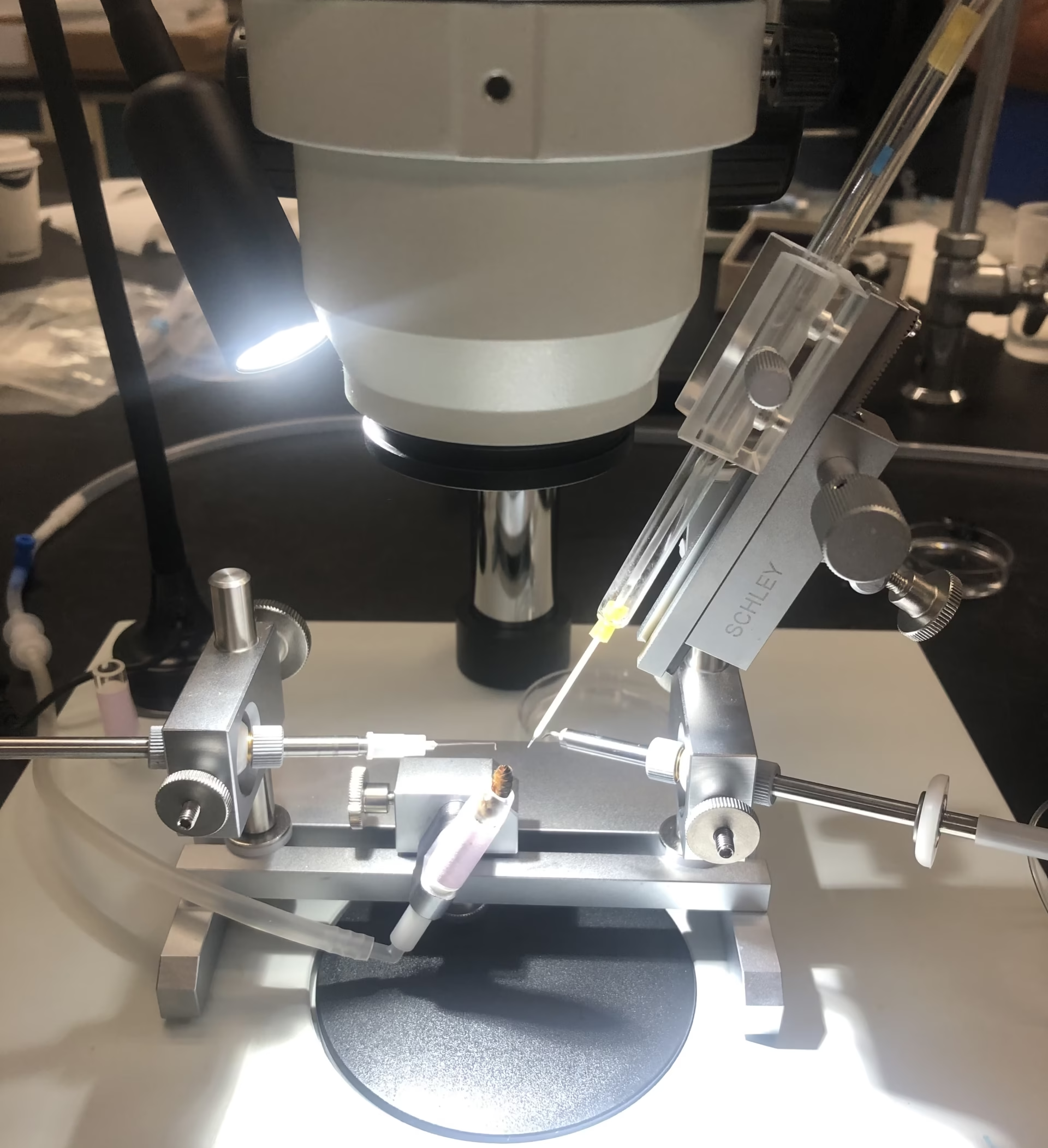Your cart is currently empty!
Instrumental Insemination

One of the more technical aspects of modern beekeeping is instrumental insemination, a technique that allows beekeepers to control the genetics of their bee populations with precision. In this blog post, we’ll explore what instrumental insemination is, its benefits, and how it impacts the future of beekeeping.
What is Instrumental Insemination?
Instrumental insemination is a method used to artificially inseminate queen bees. Unlike natural mating, where a queen bee mates with drones in the wild, instrumental insemination involves collecting semen from selected drones and directly inseminating a queen in a controlled environment. This technique allows beekeepers to select specific genetic traits, such as disease resistance or honey production, and incorporate them into their bee colonies.
The Process of Instrumental Insemination
- Selection of Drones and Queens: The process begins with the selection of drones and queens based on desired characteristics.
- Collection of Drone Semen: Mature drones are collected from colonies. This is typically done when drones are abundant, often in late spring or early summer. The next step involves collecting semen from the selected drones. Using a specialized instrument, semen is collected from multiple drones. This requires skill and precision to avoid damaging the semen and to ensure a viable sample is obtained.
- Insemination of the Queen: The collected semen is then used to inseminate the virgin queen(s). This delicate procedure is done in a sterile environment and demands precision and care to ensure the queen remains unharmed. The queen is anesthetized, and the semen is introduced into her oviducts using a specialized syringe.
- Post-Insemination Care: After insemination, the queen is given time to recover and is fed honey to replenish her strength. She is then marked with a small numbered disk to uniquely identify her. After the inseminated queen is successfully introduced to a colony, she is monitored to ensure that she is laying fertilized eggs, indicating successful insemination.
Benefits of Instrumental Insemination
- Controlled Breeding: Beekeepers can enhance desirable traits such as increased honey production, improved temperament, or resistance to pests and diseases.
- Conservation of Genetics: This process offers a reliable method for maintaining and propagating closed breeding populations or rare bee breeds.
- Improved Colony Health: Through careful selection, colonies can become more resilient to the modern environmental stressors and pathogens.
Challenges and Considerations
- Technical Skill Required: This process demands training and experience, limiting its use to trained professionals.
- Cost: Equipment and training can be expensive, making it less accessible to small-scale beekeepers.
- Ethical Questions: There are debates about the naturalness of the process and its impact on bee behavior.
Impact on the Future of Beekeeping
As challenges such as colony collapse disorder and climate change impact the health of bee populations, instrumental insemination provides a valuable tool for beekeepers. By enabling precise genetic management, this technique supports the sustainability and productivity of bee colonies. Moreover, it opens doors for advanced research in bee genetics and behavior, paving the way for innovations in beekeeping practices.
Instrumental insemination is a powerful technique that offers significant advantages to modern beekeeping. By allowing beekeepers to take control of the genetic destiny of their colonies, it not only enhances productivity and health but also contributes to the broader goal of preserving biodiversity within bee populations. As technology advances, instrumental insemination will likely play an even more integral role in the future of sustainable beekeeping.

Leave a Reply